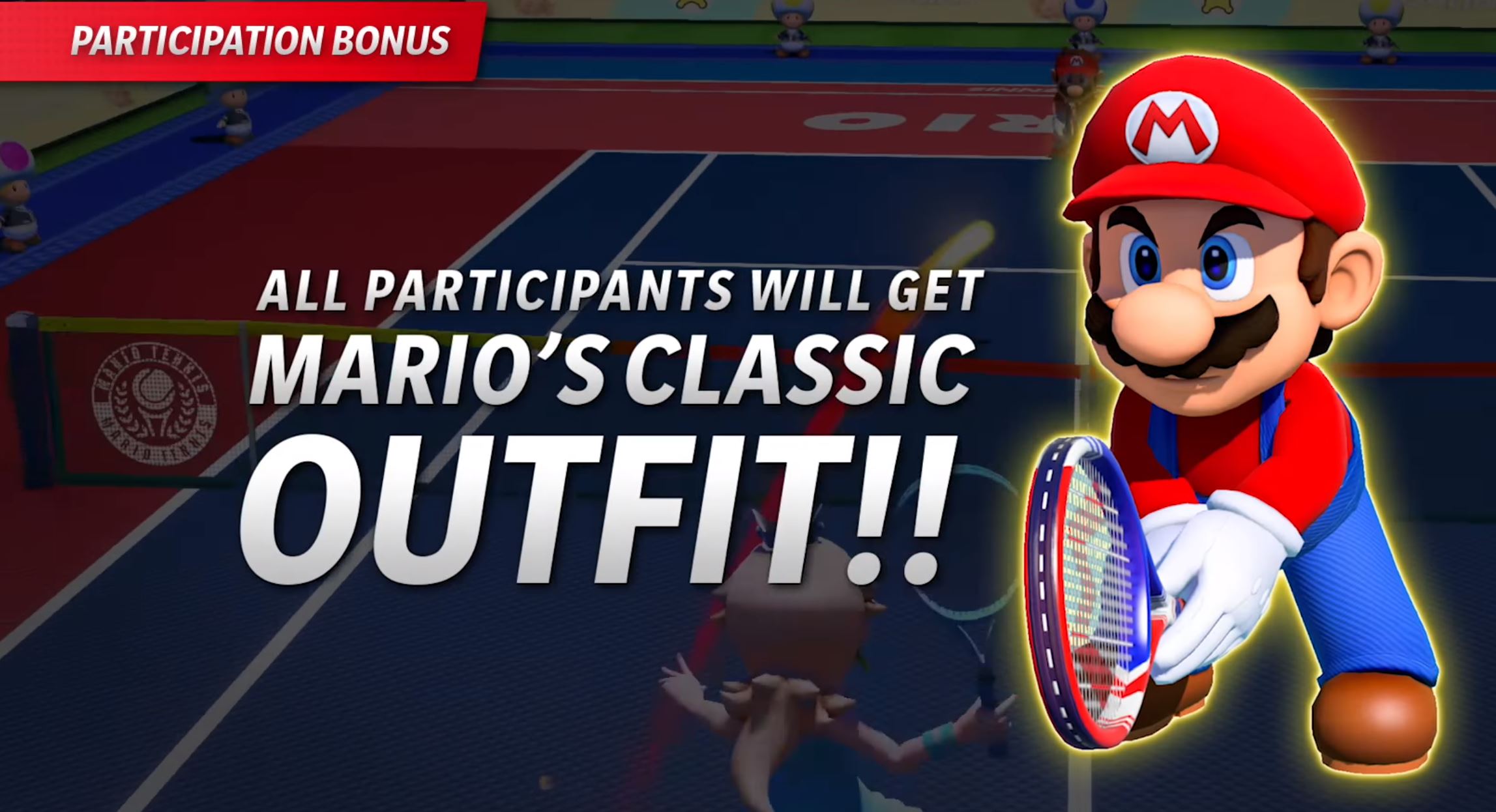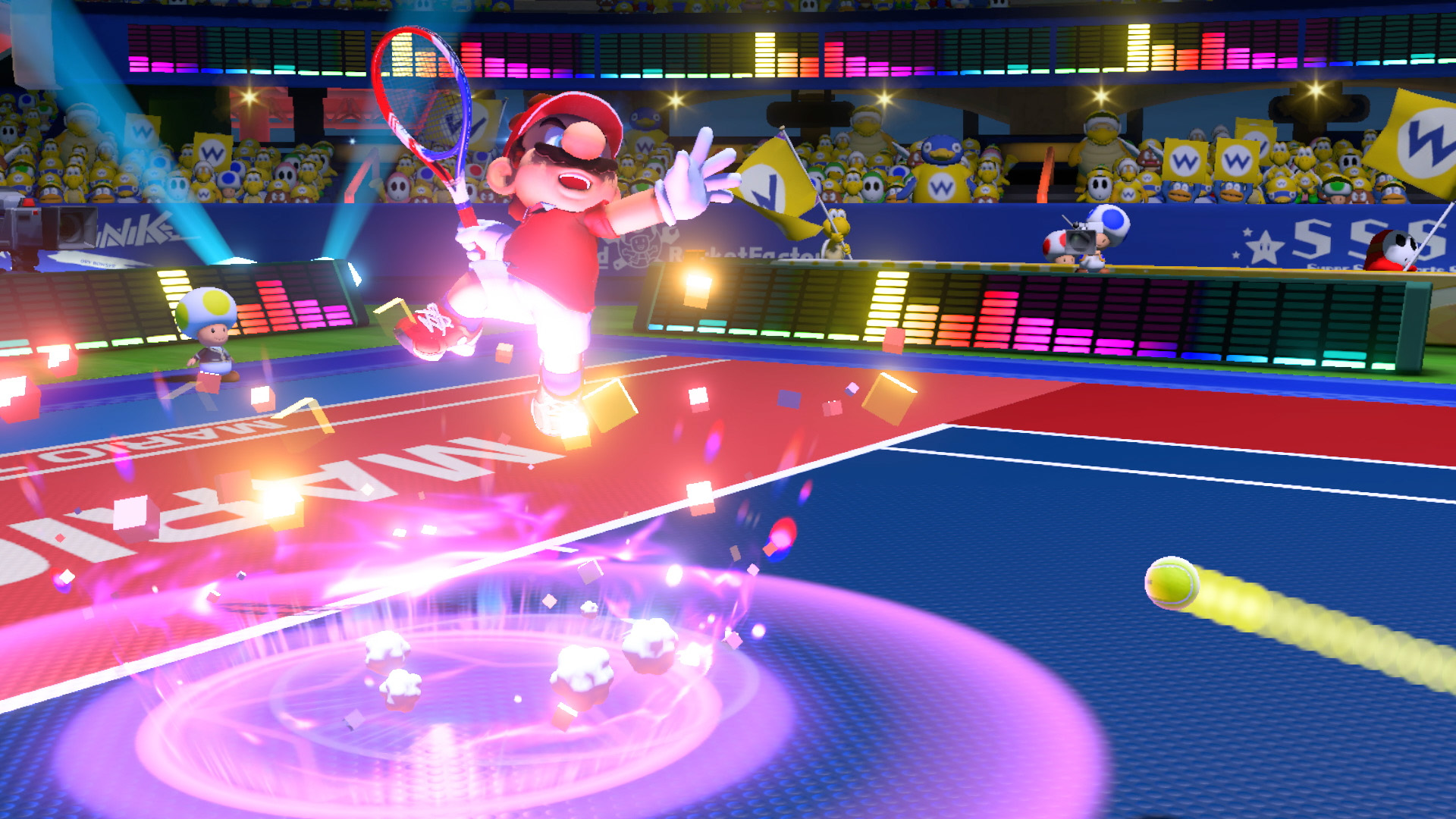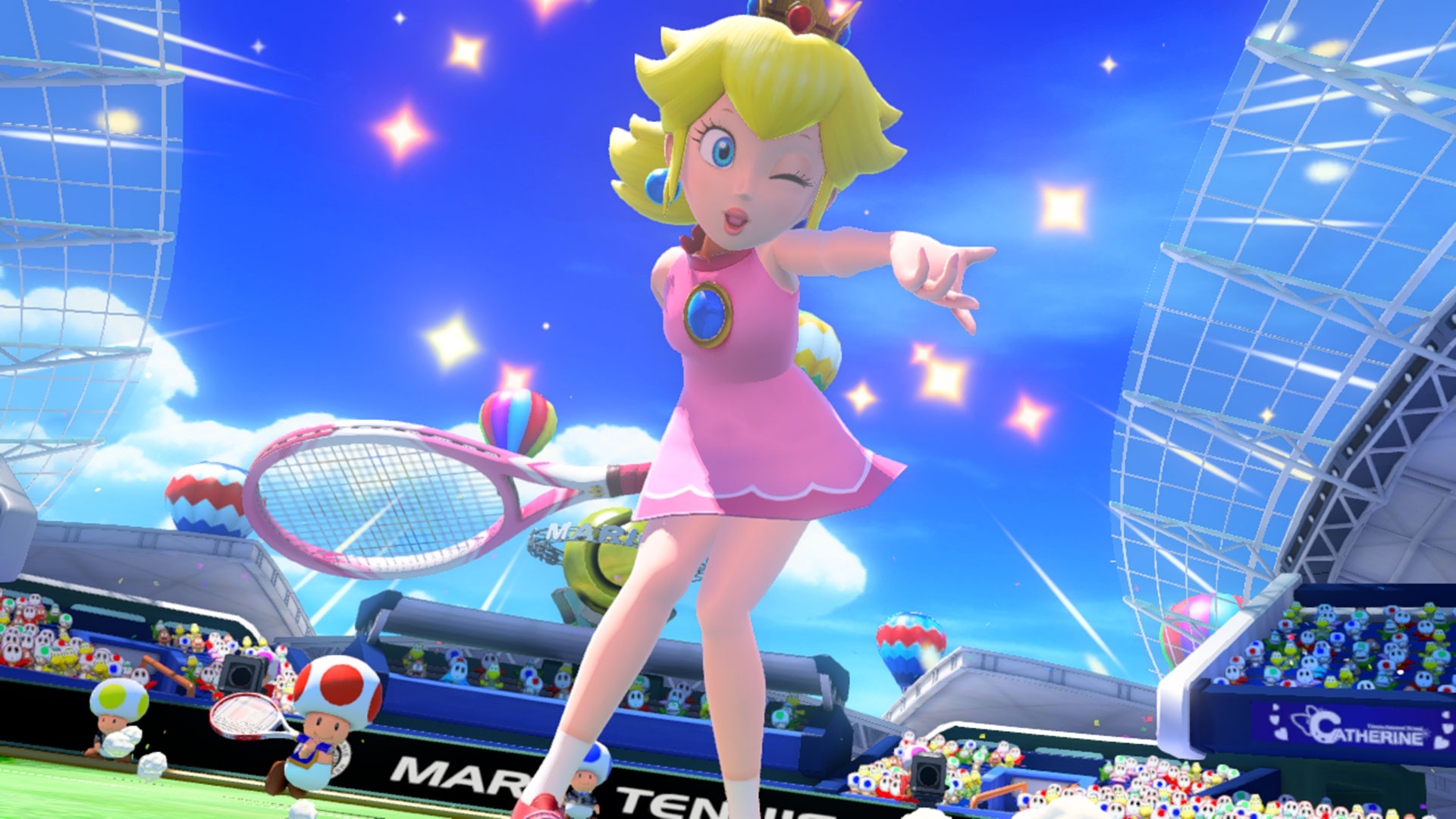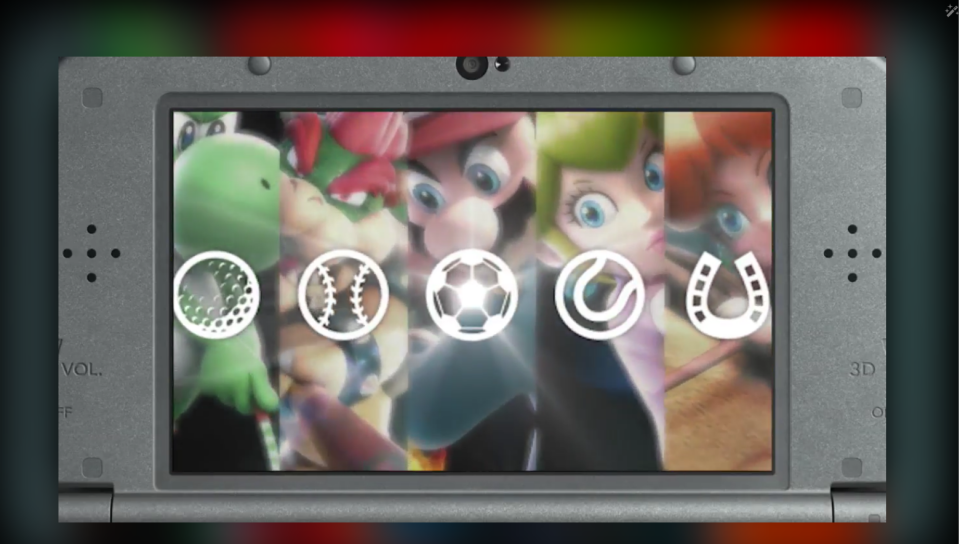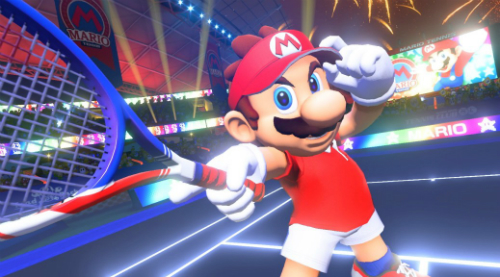
There’s great potential behind a Mario Tennis title on the Switch, just from the nature of the console itself. Being able to get in a few rounds on the go in handheld mode, or whip out the Joy-Cons and instantly get into a match with a friend locally, or jump online for a longer tournament. All Mario Tennis Aces has to do to satisfy most casual gamers is deliver on this simple premise – which I’m happy to report it largely does – although for those needing a bit more from their tennis experience, it’s not quite a perfect serve.
Upon first booting Mario Tennis Aces you’re thrust directly into the game’s story-driven Adventure mode. Story modes aren’t necessarily anything new for the spinoff series, and I’m honestly on board with the weirdness of a full-on adventure taking place entirely on tennis courts, so long as it’s fun. The premise this time around is that Luigi is tricked by Wario and Waluigi into picking up a cursed tennis racquet, which binds the three of them to the supernatural will of Lucien. To save Luigi, Mario must journey throughout the kingdom collecting five power stones to counteract its evil forces, along the way using his tennis skills to impress allies, defeat foes and work on his backhand.
For reference on my skill level with tennis games, I haven’t played a Mario Tennis title since the Game Boy Colour game, although I have played several others like Sega Superstars Tennis and Grand Slam Tennis. I also grew up (kinda sorta) knowing how to play real tennis, so I’m not a complete dummy when it comes to the sport. That all said, I actually found the difficulty curve on the Story Mode surprising, and kind of frustrating. The early levels are a breeze, but by the time you’re going after your second power stone, there are specific challenges that took me umpteen retries to get right because they required some insanely long rally, or super-accurate series of shots, within increasingly tight time limits. There are several courts that are introduced as you play with their own quirks and challenges – some are fun, like the Forest’s Piranha Plants snapping up balls and shooting them back, but some like the Pirate Ship’s mast feel unfair, and difficult to take advantage of. That mast in particular is a piece of cake for the AI to hit and send balls changing direction all over your half of the court, but you’d be lucky to hit it once or twice with the accuracy your own controls provide. Having to cycle through dialogue and wait for loading between retries is a small niggle, but one that adds to the frustration as well.
However, if you’re a much better player than I, which is extremely possible, then the Story Mode may not last too long. If you get onto a roll and don’t get stuck like I did, there are only a few hours of content within it, including optional branching side practice missions. As you progress, you unlock different courts that can be played in other modes, as well as different racquets that can’t. Mario levels up the more you play, but you don’t have any control over what attributes you increase, beyond which racquet he uses. With each new one just being progressively better than the last one overall, there’s not much choice.
However, the actual tennis mechanics driving all of this are quite fun and unique. Beyond the simple rallies back and forth with different strokes like topspin, slice and lobs, there are more spectacular moves each character can pull off. The most obvious are the ‘Zone’ moves. Occasionally when in a rally and your opponent hits a lob, if your special meter is high enough you can launch yourself at the ball and enter a first-person view – controlled by the Joy-Con’s motion sensors – to aim with pinpoint accuracy where you want to send the ball sailing off to at high speed. This is the ‘Zone Shot’, and it launches at such a high speed, in fact, that if your opponent doesn’t completely miss the return or block it correctly it can break their racquet completely, forfeiting the point. Racquets act as lives in matches, and if you break your opponent’s racquet too many times, you’ll automatically win the match. It’s a cool mechanic and one I especially tended to lean on a whole lot, as especially online it’s a way to get an easy point. Each character also can also charge a ‘Special’ move that functions in the same way.
The other Zone move is ‘Zone Speed’ which allows you to slow time briefly to run to where you need to be on the court. This is a pretty sensible addition that makes sense in an arcade-style tennis game, along with characters’ ‘Trick Shots’ which let you quickly flip to an area to hit the ball with a flick of the Right-Stick, although they’re difficult to pull off precisely. With all of these moves available tennis games rarely boil down to simple serves, returns and rallies, but flurries of charged shots, and careful timing decisions on when to pull off a super move. As many others have noted, it’s almost like a fighting game in many ways on a technical level, but applied to tennis, and it all feels fresh, unique and right for both Mario and the Switch.
It’s also a hell of a lot of fun both local multiplayer and online, where I experienced a pretty stable connection as I worked my way up the brackets in its tournament mode. If you have friends who want to jump into a casual Wii Sports-esque experience, ‘Swing Mode’ allows you to use simple Joy-Con motion controls that aren’t incredibly precise, but good enough to put into a mate’s hands and let them have a swing. That said, the various trick shots, special shots and Zone mechanics are a lot to take-in for a new player, to the point that you may need to drop down to the ‘Simple Mode’ for matches somewhere like a party, with many inexperienced players, which brings the game back to simple tennis rules.
However, throughout all these modes there are drawbacks. For one, it’s a little baffling how to choose a court for a match – which is a matter of deselecting courts you don’t want to play on randomly, as opposed to just picking one you want to play on. There’s also not much incentive to advance through tournaments except for bragging rights – there are no special racquets to unlock or ways to customise the characters. The complete roster (which is actually pretty good, and features the cutest version of Chain Chomp I’ve seen yet) is unlocked from the start, with some minor characters to be unlocked via DLC in the coming months. With no reason to keep coming back, unless you have a strong Mario Tennis clique going with your coworkers or friends, Aces may see limited time in your Switch game rotation.
The best things Mario Tennis Aces has going for it are the fun technical tennis mechanics, and the fact there’s a good selection of modes to jump into both solo and with friends, thanks to the Switch’s flexibility. I do have some reservations, particularly about the at-times unfair and frustrating single player mode and lack of overall longevity, but that doesn’t mean you can’t get a good game of tennis out of the title. Ultimately, Mario Tennis Aces works best for veterans and those who take the time to learn all of its mechanics, although by the time they do they may have seen all the game has to offer.
-Fun mash-up of tennis mechanics and precision special moves -Great online and local multiplayer -Attractive presentation and decent roster
-Difficult for newcomers, short for veterans -Little that's meaningful to unlock, or keep your attention



